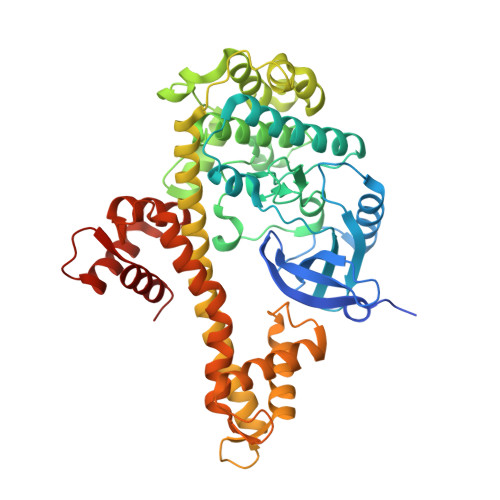Potent and selective inhibitors of CDPK1 from T. gondii and C. parvum based on a 5-aminopyrazole-4-carboxamide scaffold.
Zhang, Z., Ojo, K.K., Vidadala, R., Huang, W., Geiger, J.A., Scheele, S., Choi, R., Reid, M.C., Keyloun, K.R., Rivas, K., Siddaramaiah, L.K., Comess, K.M., Robinson, K.P., Merta, P.J., Kifle, L., Hol, W.G., Parsons, M., Merritt, E.A., Maly, D.J., Verlinde, C.L., Van Voorhis, W.C., Fan, E.(2014) ACS Med Chem Lett 5: 40-44
- PubMed: 24494061
- DOI: https://doi.org/10.1021/ml400315s
- Primary Citation of Related Structures:
4M84, 4ONA - PubMed Abstract:
5-Aminopyrazole-4-carboxamide was used as an alternative scaffold to substitute for the pyrazolopyrimidine of a known "bumped kinase inhibitor" to create selective inhibitors of calcium-dependent protein kinase-1 from both Toxoplasma gondii and Cryptosporidium parvum . Compounds with low nanomolar inhibitory potencies against the target enzymes were obtained. The most selective inhibitors also exhibited submicromolar activities in T. gondii cell proliferation assays and were shown to be non-toxic to mammalian cells.
- Department of Biochemistry, University of Washington, Seattle, WA 98195, United States.
Organizational Affiliation:

















